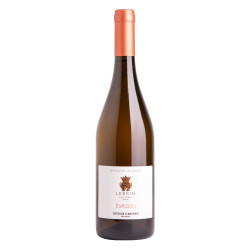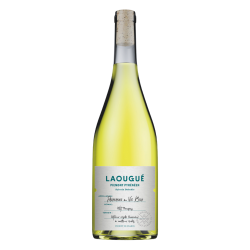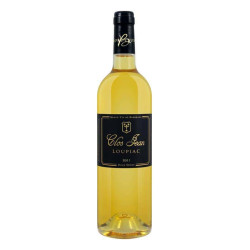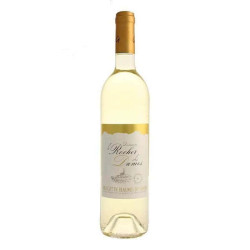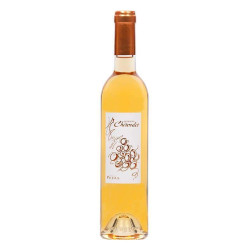Let's eat !
WHAT WINE TO DRINK WITH FOIE GRAS?

Difficult to Hide the Anticipation for One of the Stars of the Moment: Foie Gras
Foie Gras: More Than Just a Christmas Story
It's hard to hide the anticipation for one of the stars of the moment: foie gras. This festive delicacy has been a staple on French Christmas and New Year's Eve tables for many years. Both indulgent and gourmet, it can be served as an appetizer or a dessert, delighting many palates.
For wine and gastronomy enthusiasts, these festive moments are also synonymous with fine bottles and good times. This year, we unveil the secrets of a successful wine and foie gras pairing to delight your taste buds.
Foie Gras has not waited for Christmas to make its mark on our tables. Although Father Christmas originated in the mid-19th century and Christmas traditions took root in the 4th century AD, foie gras has been around for a much longer time.
The earliest evidence of fattening geese for gastronomic purposes dates back to ancient Egypt, between 2845 and 2400 BC. This historical trace is depicted in a carved stone bas-relief visible at the Louvre Museum in Paris.
The relief shows the process used by Egyptians to fatten geese and prepare foie gras, far from the Christmas tables. It is believed that the discovery of foie gras's taste qualities is linked to ancient divination practices, where reading animal entrails was common.
This practice traveled through the years and civilizations to reach us, including through the Roman Empire. Pliny the Elder, a Roman naturalist and writer, worked diligently to find the official inventor of foie gras and explore various ways to prepare it.
Today in France, there are two major styles of foie gras: southwestern foie gras, lightly seasoned to let the liver's flavors shine, and Alsace foie gras, which is spiced more heavily.
What Type of Wine Pairs Well with Foie Gras?
The texture of foie gras, rich in saturated fatty acids, pairs particularly well with the natural acidity of a wine. Naturally, foie gras's flavors are elegantly enhanced by sweet notes, which is why it is often served with onion confit. So, a wine with good sweetness and acidity is ideal. However, it’s not that simple, as it depends on how the foie gras is prepared:
When simply sliced and served with accompaniments (onion confit, fleur de sel, mango chutney, fresh figs, etc.), it pairs well with a sweet white wine with good acidity. When cooked or semi-cooked, it pairs with dry white wines with good creaminess, preferably aged in oak barrels. If you wish to pair it with a red wine, you’ll need to pan-sear the foie gras. Pan-seared foie gras acquires taste characteristics that make it compatible with red wines with powerful fruit notes, or even naturally sweet red wines.
Perfect Appellations for Enjoying Foie Gras
The most closely associated appellations with foie gras are sweet white wines. For enjoying foie gras in its natural state, we recommend Sauternes, Barsac, Muscat de Beaume de Venise, Monbazillac, AOC Céron or sweet Pinot Gris.
These wines unsurprisingly come from the South-West and Alsace regions, known for their foie gras. For a change, consider a trip to the Loire Valley with a Quart de Chaume or a Coteaux du Layon. Guaranteed success!
If you want to serve cooked foie gras with a dry white wine, the Loire can again provide with a Vouvray Sec. The most famous pairings are generally found in Burgundy with Meursaults or in the Rhône Valley with Condrieu.
For red wines, opt for a Pommard, liquor wine or a naturally sweet red wine such as Maury, Banyuls, Rivesaltes, or Ratafia.
White or Red Wine with Foie Gras: Which to Choose?
We have discussed the types of wine that match foie gras depending on its preparation. However, this is not the only decision criterion to consider.
Indeed, the order of the meal is important and presents a tricky question when pairing wine and foie gras. The order of wines during a meal should follow a relatively precise sequence: sparkling wines, dry whites, sweet whites, light reds, powerful reds, and finally, sweet wines.
A precise order should also be followed for dishes so that each one makes way for the next without overshadowing it. Foie gras is a powerful-flavored dish, typically accompanied by a sweet wine.
The sommelier's trick is to consider the balance of the entire meal. If served at the beginning of the meal, choose a powerful red wine (such as a Pommard) to be served after the aperitif and white wines.
If you aim for the perfect match with a sweet wine, surprise your guests by placing foie gras just before dessert. It may be surprising, but foie gras has been served this way for many years, and the tradition of serving it as an appetizer only emerged a few decades ago.
